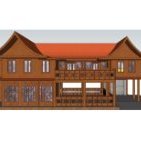The value of solar spotlight wattage compared to the old system
-
Recently Browsing 0 members
- No registered users viewing this page.
-
Topics
-
Popular Contributors
-
Latest posts...
-
0
Don't you get tired of fear mongering
Y2k scam Climate scam Trump's going to start ww3 Why do people buy into these scams? -
21
Extension (retirement) rules change?
I've been doing retirement extensions in CM for 9 years now, and it's ALWAYS been a requirement to include a copy of your latest 90 day report. -
47
Report Substandard Rebar Found in Collapsed Bangkok Building's Construction
Depends what you mean by "ultimately". No building ever actually fell down becasue of corruption, and many buildings where corruption was involved are still standing. The main Thai levels of corruption are through the Government and bureaucratic channels, where the corruption "commission" is paid oave rand above the actual price for the purchase, out of Government funds i.e. taxpayers money. Buildings fall down for techncial reasons, and noting that some samples fail to meet the requirements of a prescribed standard is not a technical reason, unless it is also shown that the stress on the bar exceeded that test value. Corruption may be the excuse for a technical failure, but it doesn't make buildings collapse. -
16
International card payments stopped working at Bangkok Bank
Okay. I'm going to reveal my ignorance here. Honest question... Why would Bangkok Bank be in the middle of a transaction between Barclaycard and Netflix? -
41
Report Staggering 80% of Thai Army Conscripts Battling Drug Addiction
A lot of the Thai conscripts, after doing their basic ten-week training, get no more proper training and are used as cheap labour for doing mundane jobs for the higher ranks. This is a waste of tax payer's money and a waste of the young Thai lads time, most senior UK military NCOs would not like composery service, as they would be wasting their time on people who do not want to be there and wasting the military budget, that could be put to better training and equipment. If the Thai government want to continue with conscription, they would be better off making the recruits do their ten weeks of training than making them reservists doing two weekend's of training a month for two years, saving money, and the lads could find jobs and start a career. -
46
I Love to Touch You When We Walk: But,..."OK in Thailand"?
1971 was the year of my first arrival in Thailand. More water buffalo back then, for sure. Plenty of touching going on between USA military personnel.
-
-
Popular in The Pub
-






.thumb.jpeg.d2d19a66404642fd9ff62d6262fd153e.jpeg)

Recommended Posts
Create an account or sign in to comment
You need to be a member in order to leave a comment
Create an account
Sign up for a new account in our community. It's easy!
Register a new accountSign in
Already have an account? Sign in here.
Sign In Now